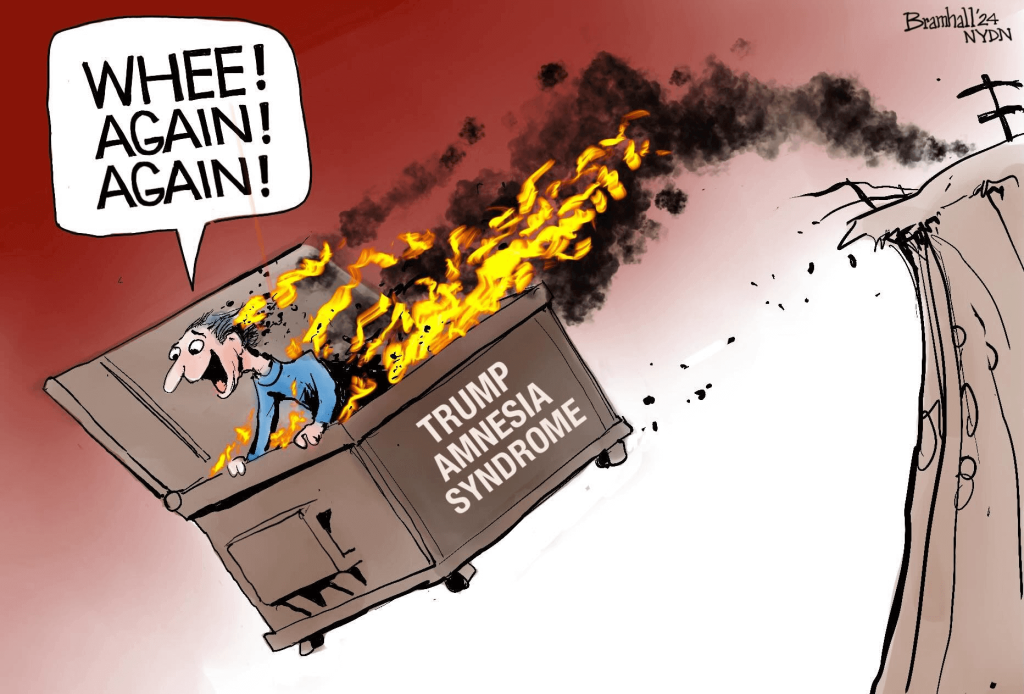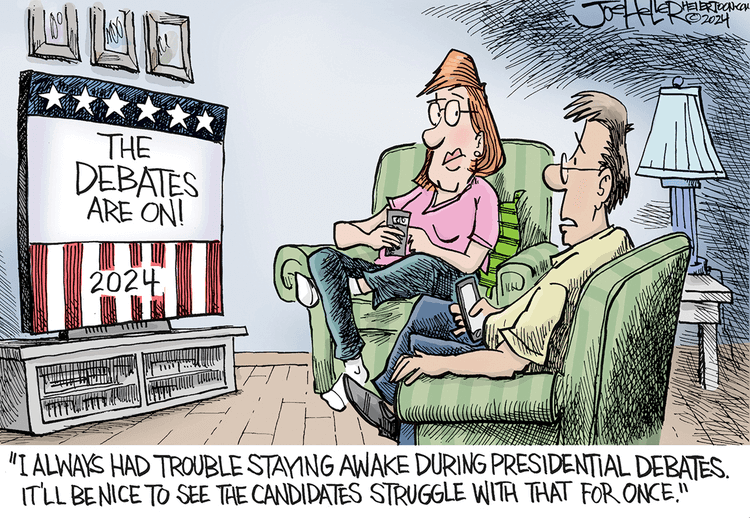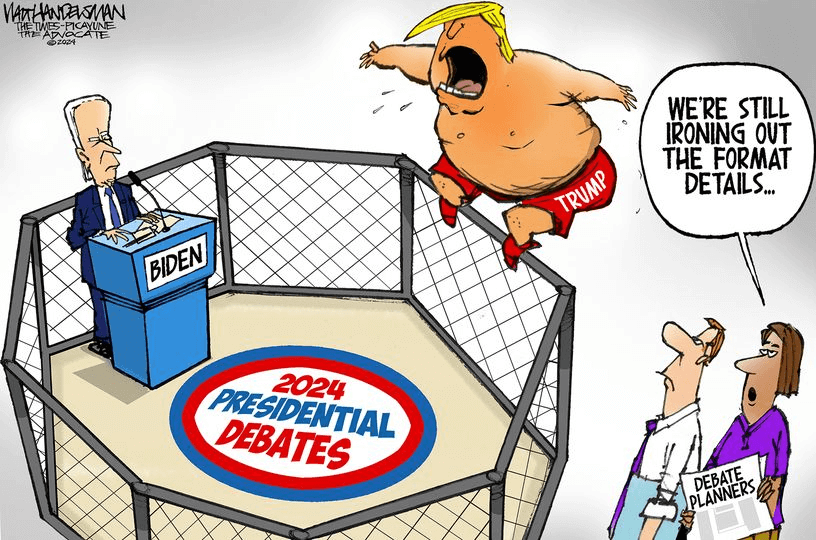CSotD: Political cartoonists take debate
Skip to comments
Joel Pett (Tribune) both announces the upcoming presidential debates and does a good job of defining the stakes in the coming election.
A major issue over the past several years has been that the explosion of media has not simply offered people a variety of approaches to the news but has allowed them to avoid news entirely.
There was a time, O Best Beloved, when a presidential address, debate or election results would be on all three networks and thus nearly the only viewing choice. In major markets, there would be an independent station or two that might be showing a movie, but most sets would be tuned to the Big Event.
Even after cable came along, it took several years for it to be in nearly every home. A half century ago, it might be in 25% of homes, while today 84% of American homes have cable, satellite or other source of television programs beyond simple broadcast.
When the first debate comes in June, then, viewers will have to hunt for it among a myriad of choices.

It’s not so much a lack of information as it is an over-abundance of opportunities to avoid reality.
Bill Bramhall contends that the question “Are you better off than you were four years ago?” rolls off the backs of Trump supporters who don’t remember layoffs, higher inflation and a million Americans dying of covid.
He’s right that, to the extent they remember the pandemic at all, they remember having to wear masks and being pressured to get vaccinated, and that they forget Dear Leader denied the crisis, recommended quack remedies and then boasted over having directed development of the vaccines they now contend nobody should take.
Whether it’s amnesia, ignorance or the result of relentless programming from the news sources they do watch won’t matter in November.

A fundamental problem is shown in this Matt Davies cartoon, because people not only on both sides of the aisle but quite a few sitting at drawing boards believe that our economy is in the toilet, despite our leading the developed world in most major categories.
Moreover, a great number of those who do bother to read about the economy fail to recognize that it often changes at a different rate than real-world factors. This makes it possible for candidates to claim credit for surges and blame troughs on who was in office at the moment rather than at the time those rises and falls were set in motion.
Still, after three years in the White House, Biden should get some credit for an economy that, if not “surging,” is both recovering and doing better than others. It’s partially a result of the end of the pandemic but it’s not likely any lingering Trump economic policies.
And let’s remember, Trump’s handling of the pandemic was abysmal, despite his loyalists focusing on mask mandates and pseudoscience. And also because of that.
In any case, that other shackle, the ankle monitor, will not likely be in place by June 27 and, if it is, those who were already in Biden’s camp will already be in Biden’s camp while those in Trump’s camp will see it as a frame-up and thus more reason to support him.
It is a puzzlement.
Juxtaposition of the Day


This is no time for stereotypes and popular mythology. Marlette is correct that both candidates are roughly the same age, though the implication that this makes them disabled is both ageist and an example of embracing an impression that may or may not be borne out by intelligent inspection.
Bramhall is guilty of much the same promotion of an accepted but unproven truth. He’s well within his rights to suggest that Trump — a perennial whiner who insists on getting things his way — is something of a baby, but he takes an unsupported both-sides cop-out by suggesting that a president who jogs and bicycles regularly is feeble and partially disabled.
It’s an odd lapse for someone generally sharp to the point of harshness in his judgments.
Juxtaposition of the Day #2


An even less justifiable bit of both-sidesing comes from Rogers and Heller. We know that Trump was known to stay up all hours on social media, then come to the Oval Office just before lunch and put in a half-hearted workday in which his staff labored to keep him focused on the business at hand, and we know he has dozed off during his trial in New York.
But if you’re going to both-sides the issue, tell us when Joe Biden fell asleep in the middle of a meeting or when he failed to show up for work at a normal time in the morning.
Political cartooning does not require balance.
And don’t make me quote Daniel Patrick Moynihan again.
Juxtaposition of the Day #3


Biden may have pulled something over on Trump by capitalizing on his “any time, any place” boast.
It makes sense to debate in June rather than after early voting — a Democratic practice — has begun in the fall, while the agreement with CNN includes not having an audience, which robs Trump of the applause and catcalls that helped him in 2016 and 2020, and in having microphones cut off when time has expired, which means Biden won’t need to tell him to shut up as he did in 2020 when moderators failed to enforce agreed-upon rules.
Handelsman is correct in that Trump wants more of a performance than a debate. He may have to deal with rules that do not allow for a circus.
I have no idea what Varvel’s cartoon is suggesting. It has absolutely no relevance to any rules I’ve been able to find.

Jack Ohman (Tribune) has the most fun with the topic, and he also may have the most accurate prediction of how things will go. The question, however, is not how the debates will change the minds of those who are already in one camp or the other.
The question is whether the fence-sitters will tune in at all, given the myriad chances they’ll have to watch something else.

Dave Whamond points out why it matters.
Unfortunately, it’s possible for both he and Ohman to be correct in their predictions.

Comments 8
Comments are closed.